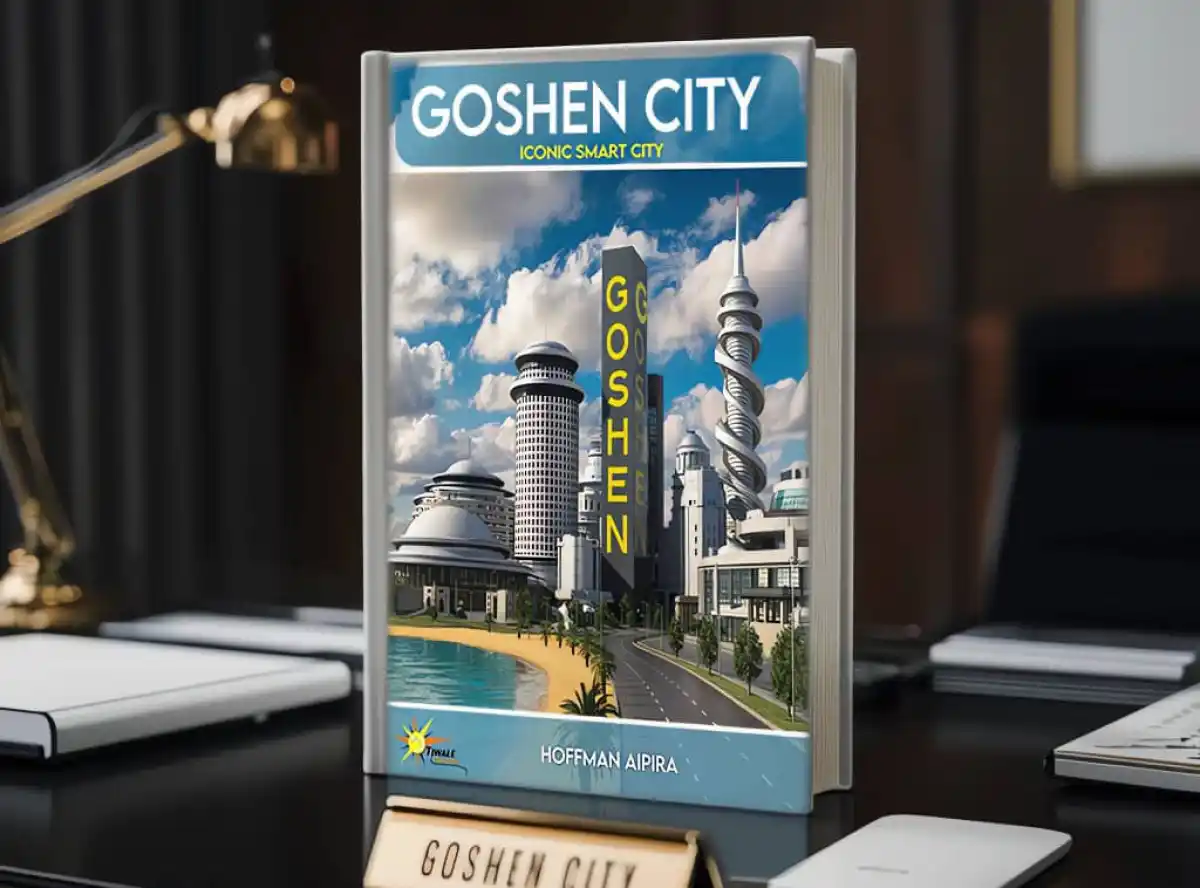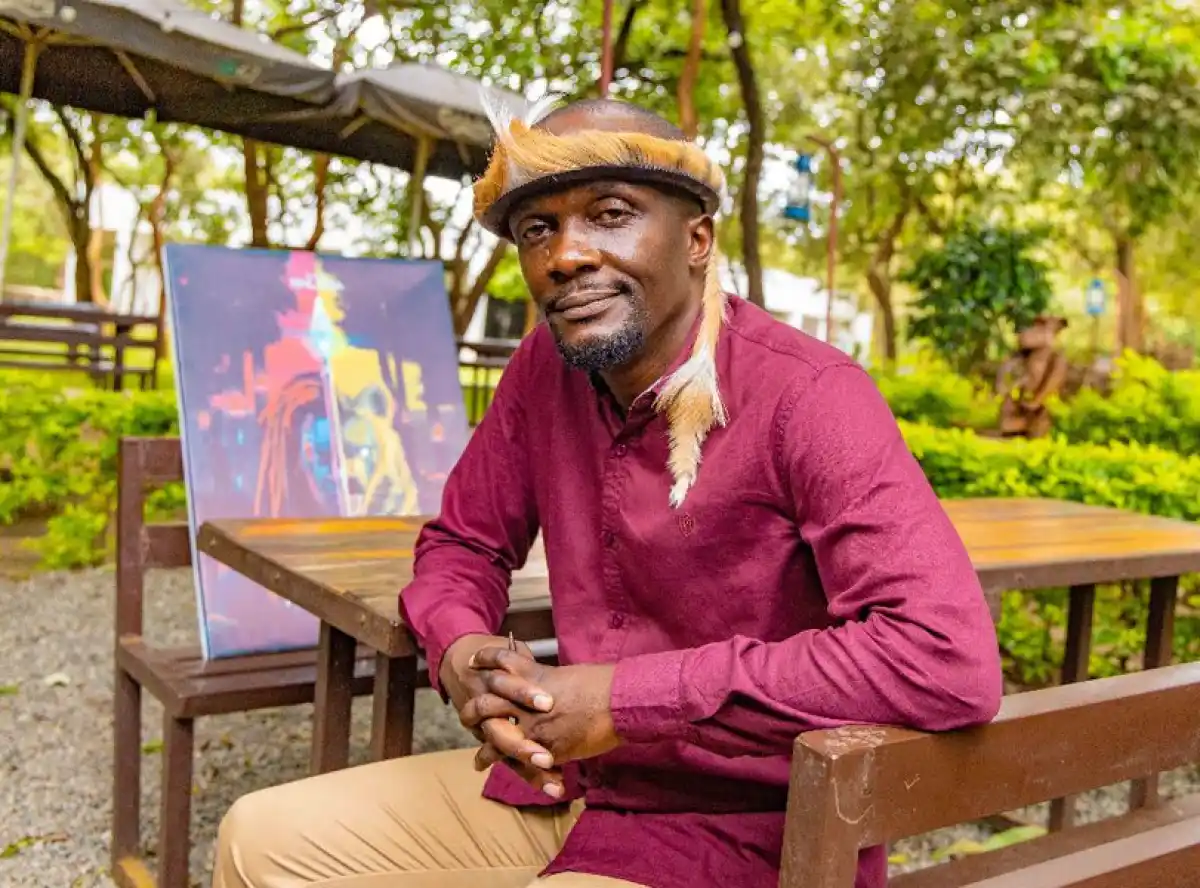Like an appetiser, Goshen City, an anthology of poems, gives one a picture of the shape the city that is sprouting from the ground in Mangochi will take—albeit in an imaginary form.
In the minds of the poems’ personae, here is a modern city in the truest sense of the word; one that does away with the concept of a watch tower, let alone the ancient design of cities, replete with trenches around it.
Instead, technology takes the watch tower and trenches’ place.
The city, according to one persona, is one steeped in its own order, self-sufficient and futuristic.
It is in it that one persona emerges from the bedroom to face a rising sun.

The anthology, the product of veteran writer Hoffman Aipira, takes the shape of the Bible, which starts with the book of Genesis—or the beginning.
‘The Beginning’ poem goes:
Sometime find the time and drive east
To Monkey Bay, make the time and see
A smart city pushing in all directions
Taking shape, occupying spaces,
Constructing tourism, religious, medical
Academic and sports institutions.
See structures mushrooming among
Indigenous trees, flora and fauna
Surrounded by a carpet of manicured
Velvet green lawn, the birth and growth
Of Goshen city.
View the city’s main attraction
A dancing water dam, a 4-D technological
Wonder of colourful water displays
Rising and falling to melodious tunes.
Stand and watch in amazement
The scenes and setting, feel the lake’s
Cool breeze blowing, massaging your face
And that’s how a modern lakeshore city
Should be, somebody said catching a glimpse
Of the city, the heart beating with
Undiluted joy at a city
So touching in its majesty.
The city to which people are being invited is one where technology nurtures nature, with state-of-the-art infrastructure overlooking a large body of water and, of course, thick forests.
The ‘forests’ part is, of course, self-explanatory in ‘Mchazime Trees at Mpima- Nansenga, 1982’ poem, which goes:
Under sunlit lake shore skies
The Mchazime trees at Mpima-Nansenga
Stand tall and proud like
Eminent men of chigawe.
Set in the rural elegance of Mangochi
The trees cuddle palm trees below
Like a gentle mother comforting a child.
What cosmic elements of the sun, the moon and stars
Brought this assembly of trees here?
This gold stem and branch beauty
Magnified by sunset-fired skies of Mangochi
As the personae in ‘The Beginning’ and ‘Mchazime Trees at Mpima-Nansenga, 1982’ allude, there is some sense of relaxed plenitude there, one that serves as the fresh flower that attracts hordes of bees to it.
In the imaginary land that is ‘Goshen City’, the founder, Shepherd Bushiri, is portrayed as someone who, like imaginary people who inhabit this imaginary place, moves with an easy grace, sense of belonging as well as ebullience.
Ground preparations

Edited by Mashallo Samilo, the Goshen City poetry anthology is set to be released at the end of this month.
The actual city—not the imaginary one in the anthology—is a brainchild of Bushiri of Enlightened Christian Gathering Church.
Perhaps Aipira is suited to the job because he knows the geography of Monkey Bay, as he is from Mangochi District.
The Goshen City anthology does not present a new turf for Aipira, who has published his works in a horde of poetry collections in Malawi and abroad.
This is because he also published his poetry anthology titled Reflections and Sunsets under the Kachere Series.
Aipira studied at Chichiri Secondary School in Blantyre and graduated from Lilongwe University of Agriculture and Natural Resources [then known as Bunda College] and the universities of Bath and York in the United Kingdom.
A Malawi Writers Union Executive Member and literary critic for Malawi Broadcasting Corporation Radio 1 ‘Writers Corner’ programme, Aipira comes from Mvumba Village, Traditional Authority Nankumba, Monkey Bay, in Mangochi District.
Meanwhile, Samilo, who is the art director at Tiwale Publications, has said they are elated to be part of Aipira’s poetic exercise.
“It is great to be part of the work on the iconic city of Goshen. Prime responsibility has been taken to produce a dream futuristic anthology of poetry that will take the audience to the world of possibility.
“Surely, time has come for African poets to be exploring themes of their heritage and cultural development, instead of relying on Western agents and editors to give us directives. Western poetry is quite insular. Hoffman Aipira is one of the poets that have a divine spark in creative writing, apart from being an avid researcher and florist,” Samilo said.
As for his review in the anthology, it goes thus: “Goshen City’s essence and enchantment of beaches are encapsulated in verses of purest grace, painted by Aipira with a natural eye that embraces every nuanced feature. This poetic journey transcends the ordinary, connecting humanity with supernatural solace and enduring faith. Aipira’s artistry vividly renders the canvas, providing a detailed expression and cinematic portrayal of the city,” Samilo indicates.
Another review from a technician-cum-Timber Bridge Construction Company Chief Executive Officer Mphatso Msolola reads: “Building is not just about erecting walls; it’s a dream of creating spaces for a life’s firm foundation because no matter how hard it gets, we are going to make it.”
When everything is said and done, it must be remembered that Goshen City could be an extension of an ancient concept; that is, the concept of Goshen Garden City.
This concept spouted from ancient cities of Mexico and Rome.
History has it that the concept had ardent disciples in American architect Frank Lloyd Wright, who designed a Broad Acre estate in Chicago.
Before that—that is, in the 18th century—similar efforts by Ebnezer Howard in the United Kingdom are credited for giving birth to the Garden City movement.
Just that, while the green cities of modern times are strewn with trees, the Goshen City of Mangochi—the real, and not imaginary, one that is taking shape—is designed to integrate a botanic collection of indigenous and orchard trees.
When all is said and done, in coming up with the idea of Goshen City, Bushiri wears his guts on the outside.
As for Aipira, his Goshen City builds on abstract hope to create the impression that imaginary things can be equated to tangible things.
















